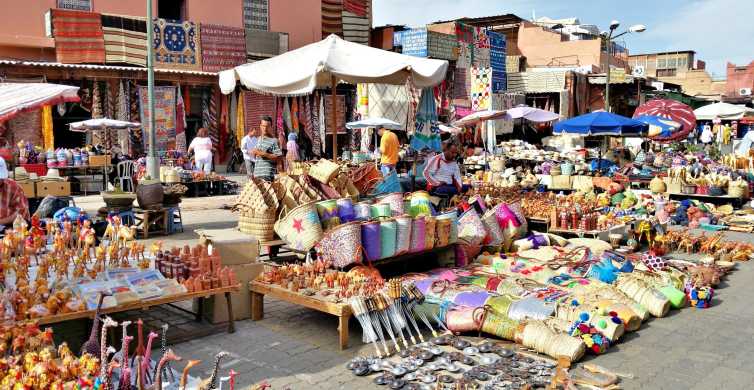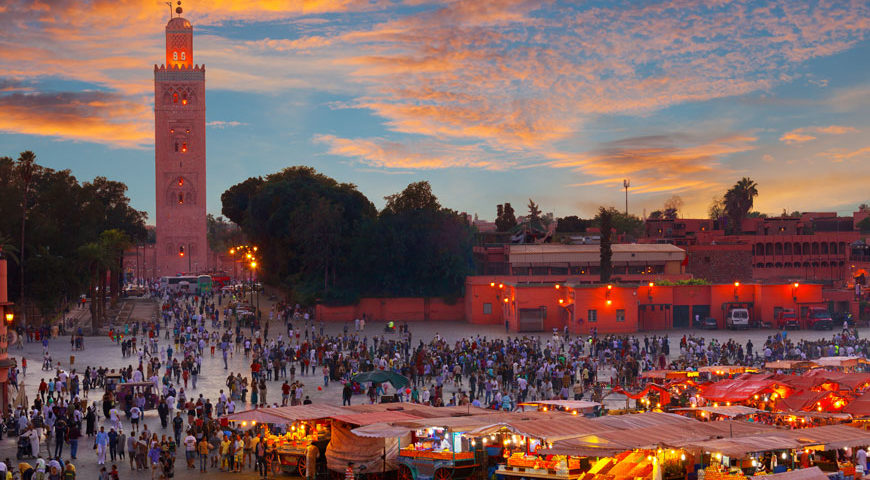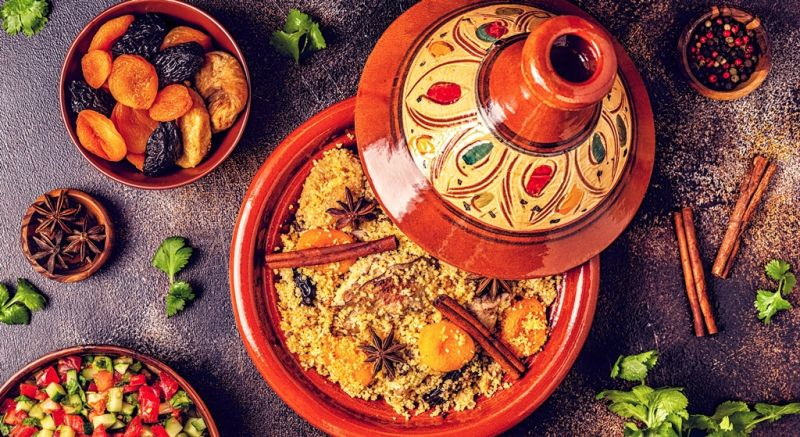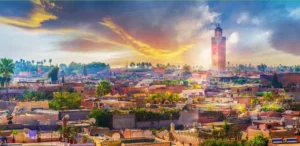Introduction: Traditional markets in Marrakech
The phrase “Traditional markets in Marrakech” encapsulates an experience that goes beyond the transaction of goods — it’s a sensory journey, an immersion into the essence of Moroccan heritage. In this guide, we’ll embark on a virtual tour through the labyrinthine alleys and bustling squares, unveiling the treasures that define the traditional markets in Marrakech.
Table of Contents
Unveiling Marrakech’s Traditional Markets:
Step into the enchanting world of Marrakech’s traditional markets, where the air is infused with the aroma of exotic spices, and vibrant colors dance in harmony. These markets, also known as “souks,” are a celebration of craftsmanship and trade, embodying the age-old traditions of Moroccan culture. The medina, a UNESCO World Heritage site, hosts a myriad of souks specializing in everything from textiles and ceramics to spices and leather goods. Each corner tells a story, weaving together the threads of Marrakech’s rich history.
Amidst the narrow passageways, you’ll discover the Medina Market, a maze of stalls that beckon with intricately designed rugs, leather goods, and traditional Moroccan attire. The atmosphere is alive with the sounds of bargaining and the sights of skilled artisans at work. As you navigate through the souks, the vibrant tapestry of Marrakech unfolds, offering a glimpse into the daily life and traditions of its people.

A Stroll Through the Lively Souks:
No exploration of Marrakech’s traditional markets is complete without a journey through Jemaa el-Fnaa, the iconic square that transforms into a lively marketplace as the day unfolds. Jemaa el-Fnaa is a kaleidoscope of sights and sounds, where storytellers, musicians, and artisans converge to create an unparalleled spectacle. Stroll through the stalls laden with spices, textiles, and handmade crafts, each vendor showcasing the skill and artistry passed down through generations.

The souks are not merely places to shop; they are living entities that embody the spirit of Marrakech. Engage with local vendors, witness the craftsmanship that goes into every item, and embrace the vibrant energy that permeates the air. Whether you’re drawn to the colorful textiles of Souk Semmarine or the aromatic spices of Souk El Attarine, each souk offers a unique facet of Marrakech’s traditional markets, inviting you to be a part of the tapestry.
Exploring the Rich Heritage: Traditional Markets in Marrakech
Experiencing Local Flavors:
Beyond the array of goods, Marrakech’s traditional markets offer a culinary adventure that tantalizes the taste buds. Engage your senses in the diverse world of Moroccan cuisine, where street food stalls and local eateries beckon with authenticity. Jemaa el-Fnaa transforms into a food lover’s paradise as the sun sets, with aromatic smoke rising from grills and the sounds of sizzling delicacies filling the air.
Indulge in the flavors of traditional Moroccan dishes such as tagines, couscous, and pastries infused with almonds and honey. The market’s culinary offerings are a testament to the city’s cultural diversity, reflecting a blend of Berber, Arab, and Andalusian influences. Capture the essence of Marrakech’s gastronomic heritage as you savor each bite amid the bustling atmosphere of the markets.

Practical Tips for Visitors:
For those eager to embark on their own adventure in Marrakech’s traditional markets, a few practical tips can enhance the experience. Begin your exploration early in the day to avoid the crowds and witness the markets coming to life. Bargaining is a customary practice, so embrace the opportunity to engage with vendors while respecting the local culture.
Consider hiring a local guide who can provide insights into the history and significance of each market. Dress comfortably, wear sunscreen, and carry a reusable water bottle to stay hydrated. Remember to be mindful of local customs, especially when taking photographs, and seek permission before capturing the faces of vendors or locals.
Navigating the maze-like alleys of the souks can be an adventure in itself, so be open to getting lost and discovering hidden gems along the way. Most importantly, immerse yourself in the vibrant energy of Marrakech’s traditional markets, where every interaction and every purchase contribute to the living heritage of this remarkable city.
Conclusion:
In conclusion, exploring the traditional markets of Marrakech is more than a shopping spree; it’s an odyssey through time and culture. From the historic Medina Market to the lively Jemaa el-Fnaa, each market tells a story that adds to the rich tapestry of Marrakech’s heritage. As you wander through the souks, engage with the vibrant colors, the aromatic spices, and the warm hospitality of the locals.
Marrakech’s traditional markets are a testament to the enduring legacy of craftsmanship, trade, and cultural exchange. Whether you seek handmade crafts, delectable flavors, or a glimpse into the daily life of Marrakech, the traditional markets await with open arms. So, step into this living heritage, where the past and present intertwine, and let the magic of Marrakech’s traditional markets captivate your senses.




